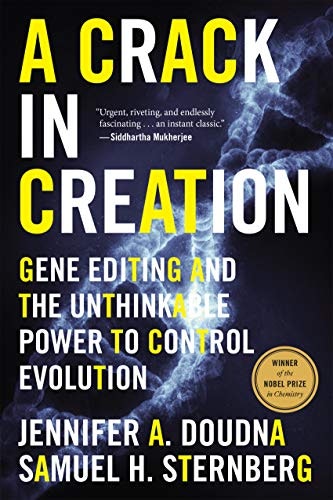Trending Assets
Top investors this month
Trending Assets
Top investors this month
A Crack In Creation: Prologue
I'm currently reading "A Crack in Creation" by Jennifer Doudna in order to deepen my knowledge of the gene editing space.
Jennifer Doudna is a biochemist who has spent the majority of her career in the laboratory conducting research in the life sciences. She was awarded the 2020 Nobel Prize in Chemistry for her pioneering work in CRISPR gene editing.
I'll be posting my cliff-notes / takeaways in memos. If you're been exploring this space or have questions, feel free to chime in!
There's also a 'Genomics Revolution' channel on Commonstock if you want to join: https://share.commonstock.com/share?invite=RqCajG

Prologue Cliffnotes
For billions of years, life progressed according to Darwin's theory of evolution: organisms developed through a series random genetic variations, some of which bestowed advantages in survival, competition, and reproduction.
When agriculture emerged ten thousand years ago, humans began biasing evolution through the selective breeding of plants and animals. But the starting material- the random DNA mutations which created genetic variations- was still generated spontaneously and randomly.
Now scientists have the tools to tinker with the DNA inside living cells, and can manipulate and rationally modify the genetic code that defines every species on the planet, including our own.
The newest and arguably most effective genetic engineering tool is called CRISPR-Cas9. It now makes an organism's entire DNA content, including all its genes, as editable as a simple piece of text.
As long as the genetic code for a particular trait is known, scientists can use CRISPR to insert, edit or delete the associated gene in virtually any living plant or animal's genome.
The implications are awe-inspiring as well as frighting. Gene-editing experiments have produced disease-resistant rice, tomatoes that ripen more slowly and soybeans with healthier fat content. Scientists think it might be possible to "humanize" the DNA of pigs, giving rise to hopes that animals might someday serve as organ donors for humans. Scientists also hope to eventually eradicate mosquito-borne illnesses such as malaria and Zika.
In laboratory-grown human cells, this new gene-editing technology was used to correct the mutations responsible for cystic fibrosis, sickle cell disease, some forms of blindness, and severe combined immunodeficiency, among many other disorders.
CRISPR enables scientists to accomplish such feats by finding and fixing single incorrect letters of DNA out of the 3.2 billion letters that make up the human genome.
Although we have a a ways to go before CRISPR-based therapies will be widely available to human patients, their potential is clear. Gene editing holds the promise of life-changing treatments, and in some cases, lifesaving cures.
Already have an account?